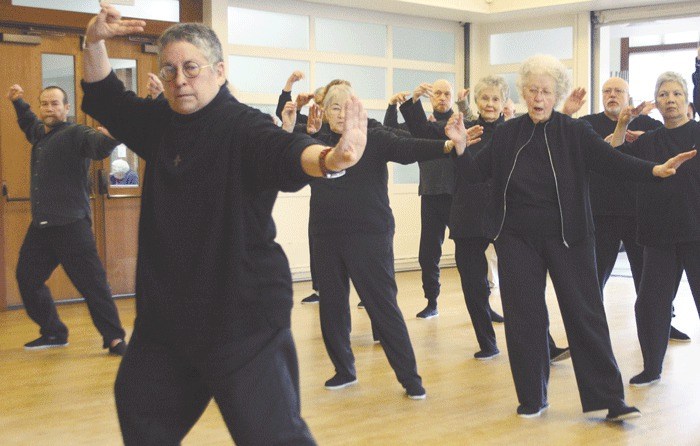Results from the 2010 Census show that Island County is graying faster than the state or the nation as a whole.
While the county’s total population continues to grow — though not at the rate predicted by the state — the number of people under 18 years old decreased significantly over the last decade.
It’s not a surprise to anyone in the county who pays attention to demographic trends, but it validates what some people consider a worrisome drift in the population — or at least one that has to be planned for.
Cheryn Weiser, the director of Senior Services of Island County, points out that the demographic shift toward more older people and fewer younger people is more pronounced in Island County, even compared to surrounding counties.
“It’s a daunting challenge,” she said. “We’re beginning a strategic planning process this year to deal precisely with this issue. I don’t think anyone has this figured out yet.”
It’s a trend that is supposed to continue. In 1986, about 25 percent of the county’s population was 50 years old and older. By 2025, 47 percent of the population will be over 50, the state Office of Financial Management predicts.
The trend over the last decade was reversed for people under 18. According to the census results, a total of 18,247 people under 18 lived in the county is 2000, but the number dipped to 16,294 in 2010. In other words, 25.5 percent of the 2000 population were minors while just 20.8 percent were minors in 2010.
The trend watchers point to a number of reasons for the change. On a national scale, the giant Baby Boomer generation is aging and people are living longer. At the same time, birth rates have dropped.
Officials pointed to the number of people retiring to Island County as one reason for the inflation of the older population. The mild weather, scenery, fishing and the Navy base are all big draws for the mature set.
On the other hand, schools on Whidbey Island are far from unique in having to deal with enrollment drops, which is an issue facing districts all over the nation. According to the census results, the number of people under 18 years old within the Oak Harbor School District decreased by 829 from 2000 to 2010. In 2010, there were 9,302 people under 18 in the district.
But Oak Harbor Superintendent Rick Schulte said the number of students in the Oak Harbor district has stabilized over the last couple of years after dropping earlier in the decade. He said Oak Harbor fared better than other school districts on Whidbey Island, enrollment-wise, partly due to the fact that Whidbey Island Naval Air Station is within the district. The Navy brings many families with school-aged children to the area.
Kim Martin, the public affairs officer for the base, said the number of people who work on the base, both active duty and civilians, has remained constant at about 10,000 over the decade.
But beyond the Navy base, many suggest that the economy on Whidbey isn’t strong or diverse enough to support many young workers. And the problem only got worse during the recession.
“It says something about what kind of economy we have on the island,” Weiser said, adding that it would be healthier economically for there to be a better balance between young families and retired folks.
An aging population brings with it plenty of challenges for the community, but also advantages. Oak Harbor Senior Center Director Mike McIntyre emphasized that the Baby Boom generation will likely remain very active and engaged as they age.
“It can be a real plus,” he said. “You have all these people with time on their hands and an interest in helping.”
The key, he said, is to harness all that energy and talent. It may take some investment from the community. The current Oak Harbor Senior Center, he said, just wasn’t designed with active older folks in mind. While the Depression-era generation still likes to play bingo and cards, the Baby Boomers are looking for more action, like trips to wineries and skiiing. In fact, McIntyre said studies have shown that the Baby Boomers bristle at the idea of going to a senior center, so much so that many centers are taking “senior” out of their names as well as changing their programs.
“They think they’re never going to get old,” he said.
Still, Weiser said a growing number of older people does present some challenges for the community. She’s especially concerned about the lack of appropriate places for older people to live. She said the island needs a wider range of housing options, from conventional senior housing to co-housing to low-income housing.
Of course, with an aging population comes increased pressure on health care. Trish Rose, the spokeswoman for Whidbey General Hospital, said hospital administration is well aware of the trend and it’s part of the reason for the proposed bond to expand the hospital. It isn’t so much an issue of capacity, she said, but of quality of care. The need for high-quality health care will only increase as the population ages.
To help the older generation, Rose said the hospital has also started new programs dedicated to helping senior citizens and lessening their need for medical help. A program called SAIL, which stands for Stay Active and Independent for Life, focuses senior citizens with the goal of improving medication safety and reducing falls.
“Generally, we’re reviewing our services and looking at ways to serve the older population in new ways,” she said.



